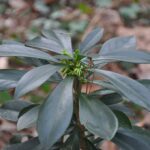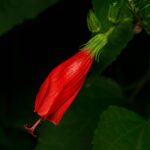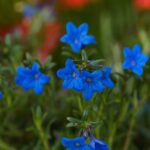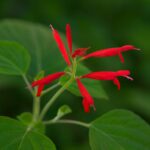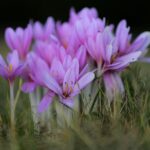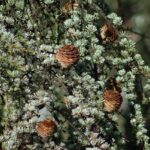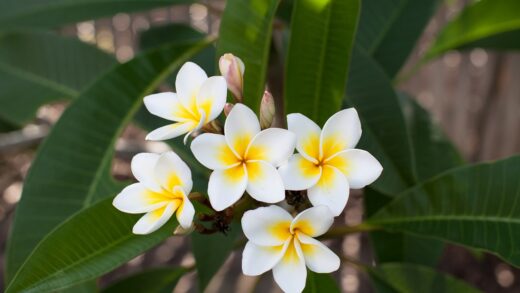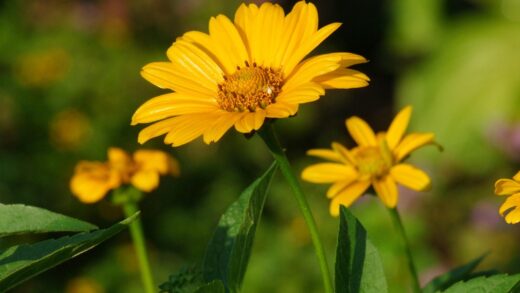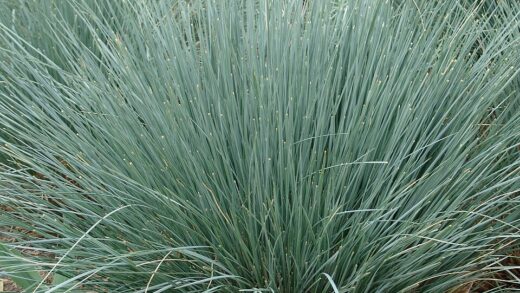Dieffenbachia, commonly known as dumb cane, is a visually striking and popular houseplant, celebrated for its large, variegated leaves that bring a touch of the tropics into any indoor space. Its appeal lies not only in its ornamental foliage, which can feature a stunning array of patterns in shades of green, cream, and white, but also in its relatively straightforward care requirements, making it suitable for even novice plant enthusiasts. However, achieving the lush, vibrant growth that makes this plant a centerpiece requires a fundamental understanding of its needs, from its preferred environment to its routine maintenance. This comprehensive guide provides the essential knowledge to cultivate a healthy and thriving Dieffenbachia, ensuring its long-lasting beauty and presence in the home or office.
Proper care begins with mimicking the plant’s native habitat in the tropical rainforests of Central and South America, where it grows under the canopy of larger trees. This natural setting dictates its preference for bright, indirect light, high humidity, and a consistently moist but well-draining soil medium. Replicating these conditions indoors is the cornerstone of successful cultivation and is crucial for preventing common problems such as leaf drop, discoloration, and stunted growth. Understanding these foundational elements allows for proactive care rather than reactive problem-solving. Ultimately, a well-cared-for dumb cane is not just a decorative object but a dynamic living element that responds positively to a well-managed environment.
The journey of caring for a Dieffenbachia involves a continuous process of observation and adjustment, as the plant’s needs can change with the seasons and its stage of growth. For instance, its water and nutrient requirements are highest during the active growing season of spring and summer and diminish significantly during the dormant period of autumn and winter. Recognizing these cyclical changes and adapting care routines accordingly is paramount for long-term health. Attentive care will be rewarded with vigorous new growth and the plant’s signature impressive foliage, which serves as a clear indicator of its well-being.
It is also critically important to acknowledge the plant’s primary defense mechanism: its toxicity. The sap of the Dieffenbachia contains calcium oxalate crystals, which can cause painful irritation, swelling, and a temporary loss of speech if ingested, hence the common name “dumb cane”. This characteristic necessitates careful handling, especially in environments with children or pets. Always wear gloves when pruning or repotting, and wash hands thoroughly afterwards to avoid accidental contact with the sap. Awareness and proper safety precautions ensure that the plant can be enjoyed for its beauty without any associated risks.
Optimal environmental conditions
Creating the right environment is arguably the most critical aspect of Dieffenbachia care, directly influencing its health and appearance. The plant thrives in bright, filtered sunlight, similar to the dappled light it would receive on the forest floor. An east-facing window is often ideal, providing gentle morning sun, while a spot a few feet away from a south or west-facing window can also be suitable, as long as the harsh afternoon sun is diffused by a sheer curtain. Direct, intense sunlight should be avoided at all costs, as it will scorch the leaves, causing brown, crispy patches and permanent damage to the foliage.
More articles on this topic
Temperature and humidity are also key environmental factors that must be carefully managed for this tropical native. Dieffenbachia prefers warm conditions, with an ideal temperature range between 18°C and 27°C (65°F and 80°F). It is highly sensitive to cold drafts and sudden temperature fluctuations, which can shock the plant and lead to the dramatic dropping of lower leaves. Furthermore, it flourishes in a high-humidity environment, so measures should be taken to increase moisture in the air, especially in centrally heated homes where the air is typically dry. Placing the pot on a pebble tray with water or using a room humidifier can significantly benefit the plant.
The plant’s placement within a room can have a profound impact on its ability to thrive. Avoid positioning it near heating or air conditioning vents, radiators, or drafty doorways and windows, as these create unstable microclimates that stress the plant. Instead, choose a location where the temperature and airflow are relatively consistent. Grouping the Dieffenbachia with other tropical plants can also help create a more humid micro-environment, as the collective transpiration from the plants will naturally increase the moisture content of the surrounding air, benefiting them all.
Monitoring the environment and the plant’s response is an ongoing task. If the leaves start to lose their variegation and turn a more solid green, it is often a sign of insufficient light. Conversely, if the foliage appears washed out, pale, or develops brown scorch marks, the plant is likely receiving too much direct sun. By paying close attention to these visual cues, one can make the necessary adjustments to the plant’s location, ensuring it receives the perfect balance of light and warmth for robust and healthy growth.
Soil composition and potting requirements
The foundation for a healthy Dieffenbachia is a high-quality potting medium that provides the right balance of moisture retention, drainage, and aeration. A standard, all-purpose indoor potting mix is a good starting point, but it should be amended to better suit the plant’s specific needs. Dieffenbachia is susceptible to root rot if its roots are left in waterlogged soil, so excellent drainage is non-negotiable. To enhance aeration and prevent compaction, incorporate materials like perlite, coarse sand, or orchid bark into the mix, aiming for a ratio of about two parts potting soil to one part amendment.
More articles on this topic
When selecting a container, always choose one with ample drainage holes at the bottom to allow excess water to escape freely. Terracotta pots are an excellent choice as their porous nature allows the soil to dry out more evenly, reducing the risk of root rot. However, plastic pots are also suitable, provided they have sufficient drainage and are not allowed to sit in a saucer full of water. The size of the pot is also important; a container that is too large can hold excess moisture for too long, while one that is too small will restrict root growth and require more frequent watering.
Repotting should be done every one to two years, or whenever the plant becomes root-bound, which is indicated by roots growing out of the drainage holes or a dense mass of roots visible at the soil surface. The best time to repot is in the spring, at the beginning of the active growing season, as this allows the plant to recover and establish itself in the new pot more quickly. When repotting, select a new container that is only about 2-5 cm (1-2 inches) larger in diameter than the previous one to avoid over-potting and the associated risk of waterlogged soil.
During the repotting process, handle the root ball with care to minimize stress to the plant. Gently loosen any compacted roots before placing the plant in the new pot, and fill in the surrounding space with fresh, well-draining potting mix. After repotting, water the plant thoroughly to help settle the soil and eliminate any air pockets around the roots. It is normal for the plant to experience a brief period of shock after repotting, but it should resume active growth within a few weeks with proper care.
Routine maintenance and feeding
Consistent and appropriate watering is a cornerstone of Dieffenbachia care. The goal is to keep the soil consistently moist but never soggy or waterlogged. A reliable method is to check the top 2-3 cm (about 1 inch) of the soil; if it feels dry to the touch, it is time to water. Water the plant thoroughly until water begins to drain from the bottom of the pot, and then discard any excess water that collects in the saucer. This practice ensures that the entire root system is hydrated while preventing the roots from sitting in stagnant water, which is a primary cause of root rot.
During the active growing season in spring and summer, Dieffenbachia benefits from regular feeding to support its vigorous foliage production. A balanced, water-soluble fertilizer for houseplants, diluted to half the recommended strength, is ideal. Apply the fertilizer every four to six weeks during this period, but always water the plant beforehand to avoid fertilizer burn on the roots. As the plant’s growth slows in the autumn and winter, feeding should be reduced or stopped completely, as the plant is not actively taking up nutrients and excess fertilizer can accumulate in the soil and cause damage.
Regular cleaning of the large leaves is not just for aesthetic purposes; it is also crucial for the plant’s health. Dust and debris can accumulate on the leaf surfaces, blocking light and hindering the plant’s ability to photosynthesize effectively. Use a soft, damp cloth or sponge to gently wipe down each leaf every few weeks. This simple task keeps the foliage looking glossy and vibrant and can also help in the early detection of common pests like spider mites or mealybugs that may be hiding on the undersides of the leaves.
Pruning is another important aspect of routine maintenance, helping to control the plant’s size and shape and encouraging fuller, bushier growth. As the plant matures, it is natural for the lower leaves to yellow and drop, resulting in a bare, cane-like stem. You can prune the top of the main stem to encourage new growth from the base or from nodes along the stem. Any yellowing or dead leaves should be removed promptly to maintain the plant’s appearance and prevent the potential spread of disease.
Troubleshooting common issues
One of the most frequent problems encountered by Dieffenbachia owners is the yellowing of leaves, which can be caused by a variety of factors. Overwatering is the most common culprit, leading to root rot and preventing the roots from absorbing nutrients effectively, which manifests as yellow foliage. However, underwatering can also cause leaves to yellow and wilt as the plant becomes dehydrated. Other potential causes include nutrient deficiencies, low humidity, or simply the natural aging process where older, lower leaves yellow and drop off to make way for new growth. A careful assessment of watering habits and environmental conditions is necessary to diagnose the root cause accurately.
Browning of leaf tips or edges is another common complaint, typically pointing to an issue with water or humidity. This can be a sign of low humidity, as the dry air causes the plant to lose moisture from its leaves faster than it can be absorbed by the roots. It can also be caused by the chemicals found in tap water, such as chlorine and fluoride, which can accumulate in the soil and become toxic to the plant over time. Using filtered, distilled, or rainwater for irrigation and increasing ambient humidity can often resolve this issue and prevent further browning.
The sudden dropping of lower leaves is a classic sign of stress in a Dieffenbachia, often triggered by a sudden change in its environment. This can be caused by exposure to cold drafts, a rapid drop in temperature, or being moved to a new location with significantly different conditions. While the loss of an occasional lower leaf is normal, a mass shedding indicates that the plant is in distress. Ensuring a stable environment with consistent temperatures and avoiding placement near drafts are the best preventative measures.
Legginess, characterized by a long, bare stem with a tuft of leaves at the top, occurs when the plant is not receiving enough light. In its effort to reach a light source, the plant will stretch, resulting in weak, elongated growth and sparse foliage. To correct this, move the plant to a location with brighter, indirect light. While this will not fill in the bare stem, it will encourage more compact and robust new growth at the top. The legginess can be permanently addressed by pruning the top of the stem, which will encourage the plant to sprout new growth from lower down on the cane.
Toxicity and handling precautions
It is imperative for every Dieffenbachia owner to be fully aware of the plant’s toxic properties. The cells of the plant contain needle-shaped calcium oxalate crystals called raphides. When the plant tissues are chewed or crushed, these crystals are released and can embed themselves in the sensitive tissues of the mouth, tongue, and throat. This physical irritation, combined with the release of proteases, causes an immediate and painful inflammatory response, leading to intense burning, swelling, and excessive drooling. The swelling can become severe enough to obstruct the airway, and while rarely fatal in humans, it causes significant discomfort and a temporary inability to speak.
Due to this toxicity, extreme care must be taken when the plant is in a home with curious children or pets. Cats and dogs that chew on the leaves can experience similar symptoms, including oral pain, pawing at the mouth, vomiting, and a decreased appetite. It is highly advisable to place the plant in a location that is completely inaccessible to children and pets, such as on a high shelf or in a room that can be closed off. Educating all members of the household about the plant’s potential danger is a crucial step in preventing accidental poisoning.
Whenever handling the Dieffenbachia, especially during activities like pruning, repotting, or taking cuttings, it is essential to wear protective gloves. The sap can cause significant skin irritation, known as contact dermatitis, in sensitive individuals. Avoid touching the face, especially the eyes and mouth, after handling the plant until hands have been thoroughly washed with soap and water. This simple precaution prevents the transfer of the irritating sap to sensitive areas of the body.
In the event of accidental ingestion or significant skin or eye contact, immediate action should be taken. If the plant is ingested, do not induce vomiting; instead, rinse the mouth thoroughly with water and offer cool liquids like milk or water to soothe the irritation. Contact a medical professional or a poison control center for further guidance. If the sap comes into contact with the eyes, flush them with lukewarm water for at least 15 minutes and seek medical attention. Being prepared and knowing the proper first-aid response is a key part of responsible Dieffenbachia ownership.







